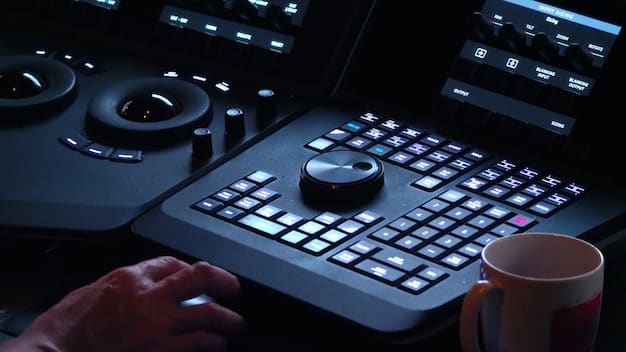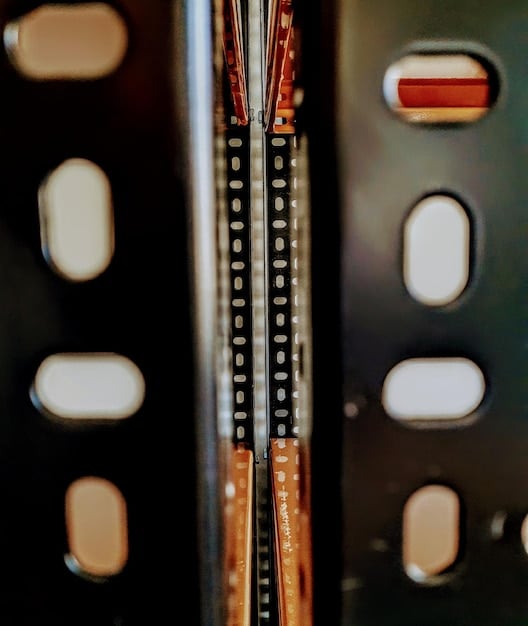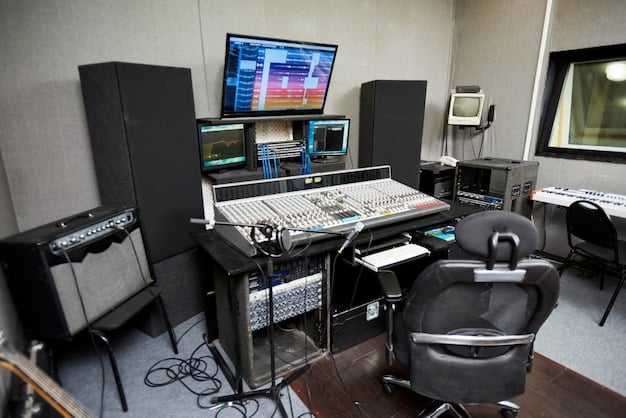Synth Sound Design: Crafting Unique Sounds for Underground Rap

Synth sound design for underground rap involves creating unique leads and pads using various techniques like synthesis, sampling, and audio effects to produce distinctive sonic textures.
Elevate your underground rap productions with innovative synth sound design. Crafting unique leads and pads can set your tracks apart and define your sonic signature, pushing the boundaries of the genre.
Understanding the Essentials of Synth Sound Design
Synth sound design is a crucial aspect of modern music production, especially in genres like underground rap where originality and innovation are highly valued. It involves manipulating synthesizers and their parameters to create unique sounds that define a track’s character.
By mastering the fundamentals of synth sound design, producers can craft distinctive leads and pads that elevate their music and set them apart from the competition. Let’s delve into these essentials to unlock your creative potential.
Basic Synthesis Techniques
At the heart of synth sound design lies a variety of synthesis techniques, each offering a unique approach to sound generation. Understanding these techniques is essential for creating a wide array of sounds.
- Subtractive Synthesis: This method involves starting with a harmonically rich sound source and then filtering out frequencies to shape the desired timbre.
- Additive Synthesis: Conversely, additive synthesis builds sounds by combining sine waves at different frequencies and amplitudes.
- Frequency Modulation (FM) Synthesis: FM synthesis uses one waveform to modulate the frequency of another, creating complex and dynamic sounds.
- Wavetable Synthesis: This technique uses a collection of single-cycle waveforms, or wavetables, which can be scanned through to produce evolving and textured sounds.
Experimenting with these techniques opens up a vast sonic palette, allowing you to create everything from gritty basses to ethereal pads.

Ultimately, mastering synthesis techniques provides the foundation for crafting signature sounds.
Crafting Unique Synth Leads
Synth leads are melodic elements that often carry the main theme of a song. In underground rap, a catchy and unique synth lead can be the defining feature of a track, capturing the listener’s attention and making the song memorable.
Designing standout synth leads requires a combination of technical knowledge and creative flair. Here are some tips to get you started.
Designing Catchy Melodies
A compelling synth lead starts with a well-crafted melody. Consider the following when creating your lead melodies:
- Simplicity: Simple melodies are often the most memorable. Start with a few key notes and build from there.
- Rhythm: Varying the rhythm of your melody can add interest and groove. Experiment with syncopation and off-beat rhythms.
- Contrast: Use contrasting melodic phrases to create a sense of tension and release.
- Repetition: Repeating melodic motifs can help to establish a hook and make the lead more recognizable.
Experiment with different scales and modes to find unique melodic ideas that complement the vibe of your track.
A great lead will stand out and capture the attention of the listener.
Creating Lush and Atmospheric Synth Pads
Synth pads provide a harmonic and textural foundation for a track, adding depth and atmosphere. In underground rap, pads can be used to create a sense of space, emotion, and complexity.
Designing expressive synth pads involves careful attention to timbre, modulation, and effects processing. Let’s explore some techniques for creating lush and atmospheric pads.
Layering and Texturing Pads
One of the most effective ways to create rich and complex synth pads is through layering multiple synth sounds. Here are some tips for layering pads effectively:
- Choose Complementary Sounds: Select synth patches that complement each other in terms of frequency content and timbre.
- Vary the Panning: Spread the layered sounds across the stereo field to create a wide and immersive soundscape.
- Use Subtle Modulation: Add subtle modulation to each layer to create movement and interest without sounding too busy.
- Apply Effects Sparingly: Use effects like reverb and delay to blend the layers together and create a cohesive sound.
Experiment with different combinations of synth sounds and effects to discover new and unexpected textures.

Layering pads can create depth and dimension in your music.
Utilizing Effects to Enhance Synth Sounds
Effects processing is an essential part of synth sound design, allowing you to shape and transform sounds in countless ways. From subtle enhancements to radical transformations, effects can add character, depth, and excitement to your synth leads and pads.
Let’s explore some key effects and how they can be used creatively.
Exploring Modulation Effects
Modulation effects such as chorus, flanger, and phaser can add movement and interest to static synth sounds. These effects work by modulating various parameters, creating a sense of swirling or shimmering.
Experiment with different settings and combinations to find unique textures and effects.
Modulation effects can bring life to your sounds.
Integrating Synths into Underground Rap Beats
Integrating synths effectively into underground rap beats requires careful attention to arrangement, mixing, and overall sonic cohesion. The goal is to create a seamless blend of electronic and acoustic elements that complements the energy and vibe of the track.
Let’s explore some practical tips for integrating synths into your beats.
Balancing Synths with Drums and Vocals
Achieving a well-balanced mix between synths, drums, and vocals is crucial for creating a polished and professional sound. Here are some tips for achieving balance:
- EQ: Use EQ to carve out space for each element in the mix, preventing frequency masking and ensuring clarity.
- Compression: Apply compression to control the dynamic range of each element and create a cohesive sound.
- Panning: Use panning to create a sense of width and separation in the mix, giving each element its own space in the stereo field.
- Automation: Automate parameters like volume and panning to create movement and interest throughout the track.
Experiment with different mixing techniques to discover what works best for your particular sound.
Blending synths with other elements can make your beats truly shine.
Advanced Sound Design Techniques
To truly stand out in underground rap, pushing the boundaries of sound design is essential. Experimentation and innovation are key to crafting sounds that are not only unique but also expressive and impactful.
Let’s delve into some advanced techniques that can help you elevate your sound design skills.
Using Granular Synthesis
Granular synthesis involves breaking down audio into tiny grains and manipulating them to create new and unexpected sounds. This technique can be used to create complex textures, evolving soundscapes, and glitchy effects.
Granular synthesis offers endless possibilities for sonic exploration.
| Key Point | Brief Description |
|---|---|
| 💡 Synth Leads | Melodic elements that define a track’s character with catchy tunes. |
| 🎶 Synth Pads | Harmonic foundation adding depth and atmosphere to the track. |
| 🎛️ Effects Usage | Enhances sounds to improve character, create depth, and add excitement. |
| 🔊 Integration | Integrate effectively into rap beats by properly balancing synths with drums and vocals. |
Frequently Asked Questions
▼
Fundamental techniques include subtractive, additive, FM, and wavetable synthesis. Subtractive synthesis shapes sound by filtering frequencies, while additive synthesis combines sine waves. FM uses one waveform to modulate another, and wavetable synthesis uses single-cycle waveforms for evolving sounds.
▼
To create a catchy synth lead, focus on simplicity, rhythm, and contrast. Use catchy melodies and vary the rhythm to add groove. Don’t forget to use contrasting phrases to create tension and release. Repetition can also establish a memorable hook.
▼
Lush synth pads can be created by layering multiple synth sounds, varying the panning to create a wide stereo field, adding subtle modulation for movement, and applying effects like reverb and delay sparingly to blend the layers cohesively.
▼
Effects processing is crucial in synth sound design as it allows you to shape and transform sounds, adding character, depth, and excitement. It helps create subtle enhancements and radical transformations that define the sonic palette.
▼
To integrate synths effectively, balance them with drums and vocals using EQ, compression, and panning. Carve out space, control dynamics, and create separation in the mix. Consider automation to add movement and interest in the track.
Conclusion
Mastering synth sound design is paramount for producers aiming to make a mark in underground rap. By delving into synthesis techniques, and integrating these elements thoughtfully, you can craft signature sounds that define your unique style and elevate your productions to new heights. Experiment, innovate, and let your creativity guide you in the exciting world of sound design!





